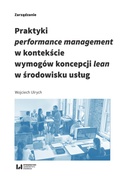Explore

Praktyki performance management w kontekście wymogów koncepcji lean w środowisku usług
Wojciech Ulrych
2018
0 Ungluers have
Faved this Work
Login to Fave
The Performance Management (PM) concept has been well documented in the English-written human resource management (HRM) literature, but little has been written in Polish research. It has been found to be a driver for both achieving as well as improving individual performance. This is why the PM concept is a system-wide approach regarding individual performance that supports team and organizational performance. It therefore possesses strategic potential (a vertical approach) as well as supplying learning, development and a remuneration system (a horizontal approach). PM mostly includes HRM practices which are system-based and can be found in all kinds of organizations in a more or less formal way. Its characteristic feature mainly includes activities between a worker and a manager. This is why at its base PM is about trust, dialogue and positive reinforcement. PM is a supportive solution for lean services which incorporates all rules and most methods and techniques used in lean manufacturing. However a lean approach in itself is based on team-oriented solutions. It can also motivate employees to move freely among workstations, to stand in for absentees or to help others in the work process, and most of all, to transfer managerial control to more employee autonomy. In general lean goes against some PM practices like stiff job descriptions, performance appraisals and individual pay-for-performance. In these circumstances it was not clear whether the European-oriented PM system would meet the Japanese-oriented lean approach in terms of value-added services (e.g. waste reduction) and to overcome lean service barriers. The lean literature states that it is unreasonable to bring collective management concepts like lean management into an individualised-oriented work environment.
This book is included in DOAB.
Why read this book? Have your say.
You must be logged in to comment.
